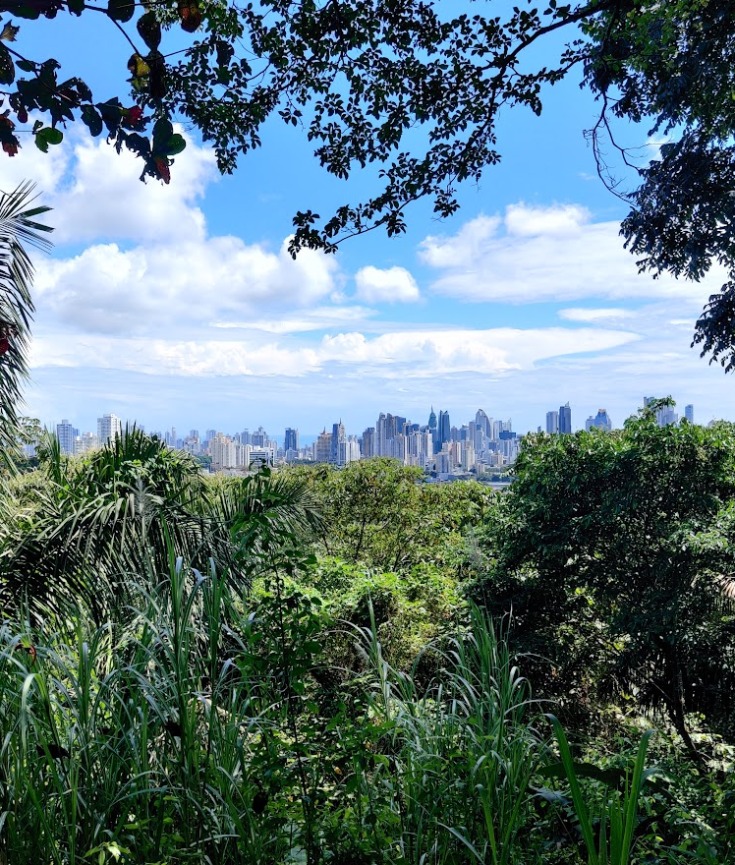By
Sonia Dhanda
PhD Anthropology
On 14–25 November 2022, government representatives from over 160 countries convened in Panama City for solutions to the biodiversity crisis and negotiations on wildlife trade regulations.
What is CITES?
The world wildlife conference, formally known as the Convention on International Trade of Endangered Species (CITES), is a global agreement to regulate the trade of endangered animals and plants. This global agreement has 184 signatories to the Convention, and over 38,000 species are regulated with 32,000 of these species belonging to the plant kingdom. CITES has existed since 1973 and every three years legally binding decisions are made at the Conference of Parties (CoP).
The aim of CITES is to ensure international trade of wildlife is not detrimental to their wild populations. CITES advocates for the sustainable use of species in order to protect them. There was an energetic synergy between the Panama Convention Centre (as the space bringing together people), the discussions on nature, and the location of a cosmopolitan capital city surrounded by rainforest.
This was coined ‘The CoP of the Americas’ as the last CITES CoP in this part of the world was twenty years ago, in Chile in 2002. There was a prominence and celebration of species found in the Americas from Neotropical wood turtles, Mud turtles, Requiem and Hammerhead sharks, and glass and Lemur leaf frogs to Trumpet trees and Cumaru trees which produce seeds known as tonka beans. The isthmus of Panama created a land bridge between North and South America allowing for plant and animal migration. The isthmus is now home to the famous Panama Canal connecting the Atlantic and Pacific oceans. A country rich in biodiversity and culture was positioned aptly to host the world wildlife conference.
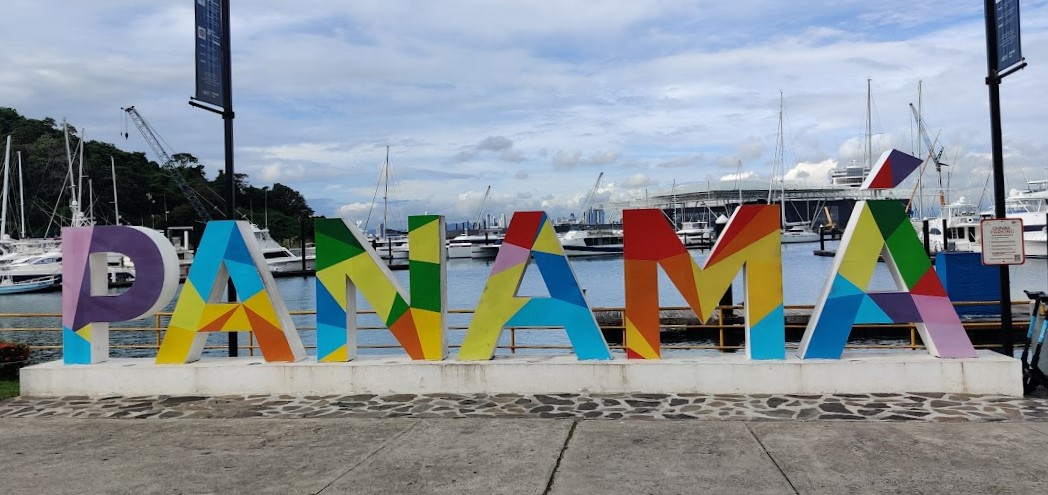
The CoP meetings are a space to add, de-list, or amend CITES legislation. This time 52 species proposals were put forward and 46 of these were adopted. A vast number of time-bound actions were agreed – 365 decisions – for CITES signatories to work together on until the next CITES CoP, to strengthen legal trade and focus conservation efforts. Over 160 governments were represented at CITES CoP19. An element of my PhD research includes an event ethnography of CITES CoP19. I attended for two weeks, and these are my personal reflections of the meeting.
CITES CoP19: Starting with a Spark
The Panama Convention Centre was completed in 2020 so it gleams in its new build glory. Each day delegates arrived at the Panama Convention Centre passing through several checkpoints manned by guards and entering the building through a security scanner. Over the course of the meeting the security staff brightened their stations with soft toys gained from other delegates such as a hippos, sharks, and crocodiles. The soft toys were usually an indicator of the agenda items to be discussed that day or that had taken place.
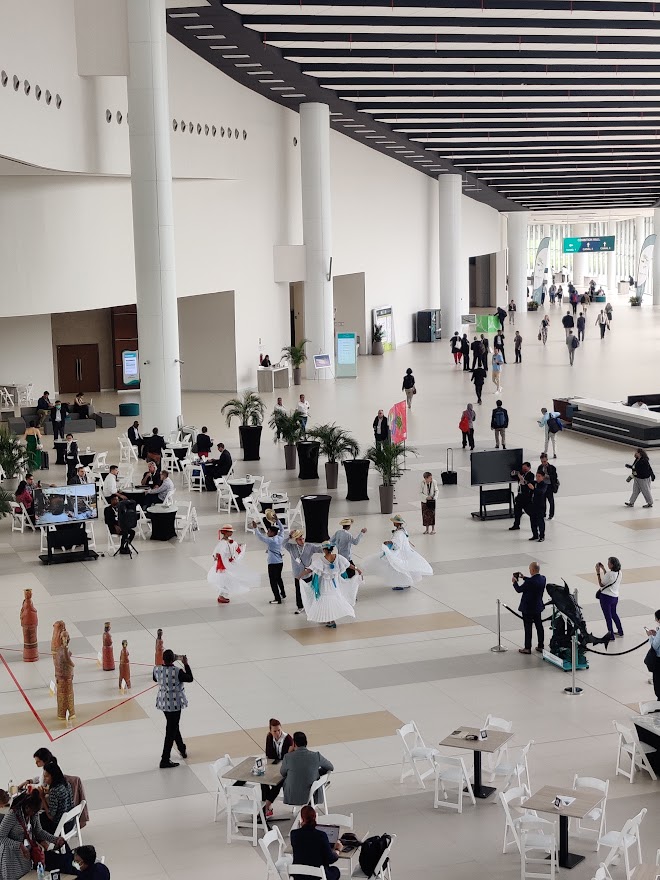
Around 2,500 people attended CITES CoP19, representing governments, non-profits, inter-governmental organisations, industry, researchers, and independent observers. Many of the representatives have openly shared their interests and opinions prior to the meeting. One may have an inkling as to which agenda items may require longer discussions, as the issues are contentious (i.e. wildlife crime enforcement). However, that is the fascination of a CoP: you will never have an opportunity to consult with everyone prior to the meeting, so one learns to expect the unexpected.
The energy of this meeting is coupled with various environmental global agreements at the forefront of many delegates’ agendas: the CITES CoP coincided with both the Climate Change CoP, and the Ramsar Convention on Wetlands CoP with a forward outlook on the decision on a new global biodiversity framework to be adopted at the Convention on Biological Diversity CoP (7 – 19 December 2022). The ether inside the convention centre is laden with these environmental responsibilities and all the delegates are conscious of the planetary crises caused by agriculture, the exploitation of plants and animals, climate change, pollution, and invasive species. Currently, more than a million species are threatened with extinction, with increased pressures on natural resources. Global governance is one mechanism to find collaborative solutions.
With no time to waste, the delegates divided into two meeting rooms: Committee I for scientific discussions and Committee II for implementation and strategic issues. Over 130 documents were submitted for discussion across these Committees, consensus and mutual agreement is strived for; however, working groups are struck to resolve divided issues. I was a member of the CITES and Forests working group which had a strategic focus to bring attention to CITES-listed tree species for collaborative funding initiatives and actions; however, discussions were heard on the definitions of forests, and whether other plants associated with forests and animals should be encompassed in this work programme. A few of the other discussions I was a part of included suitable taxonomic references for species, medicinal plants, and timber identification tools. One scientist who had attended for the first time remarked they hadn’t realised so much scientific discussion was given prominence at the meeting.
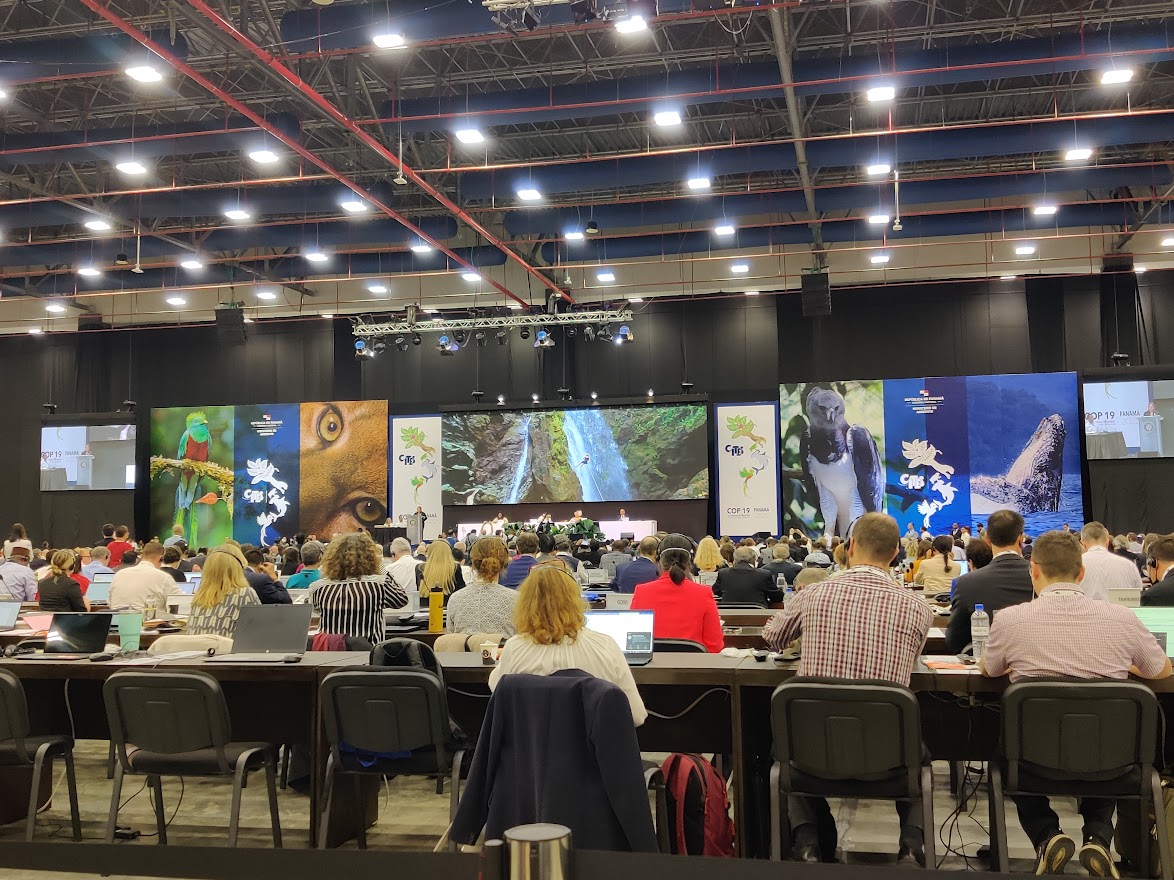
The CoP Bubble
The Convention Centre was our new home for two weeks. With long days, you quickly adapt to being in the bubble. A typical day entails an early meeting with the team and then ready to start for the 9am–12pm sessions. Lunch is usually spent attending side events and networking. The afternoon sessions run from 2-5pm, followed by more side events. On some evenings there were further side events or a late meeting session from 7-10pm. Side events are opportunities to advocate for a CITES topic or share information to give signatories guidance or new tools, whilst also being an important space to hear new initiatives or updates. They come in various formats – usually presentations, panel discussions, and Q&As.
On entering into the large atrium of the centre, the space was filled with educational banners, promotional materials, a large canvas art piece, cafes and seating areas, and sculptures. There was a prominence given to the biodiversity, culture, and art of Panama, with stands selling indigenous crafts and local souvenirs. Several of the market sellers wore fabrics symbolising and belonging to the indigenous Guna people. Guna women make and wear blouses with decorative panels called molas. Molas are textiles made from appliqued cloth, reverse appliqued cloth, and embroidery with a variety of colours, patterns, and symbols. Numerous art works with nature themes were displayed for sale alongside photographs of indigenous people in the convention centre, bringing the interlinkages of nature and culture to the forefront.
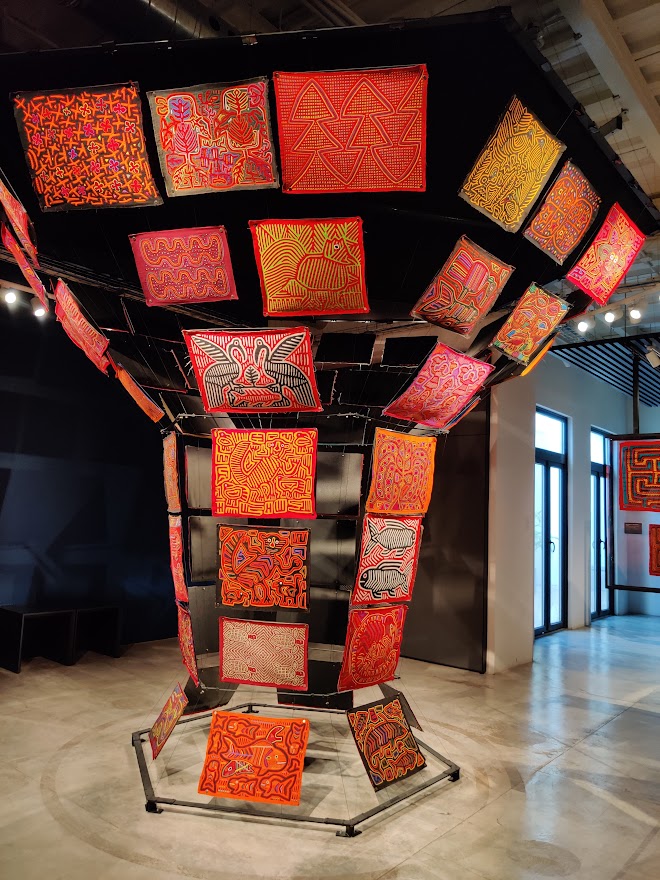
The Convention Centre became an eclectic space of pop-up performances, displaying Panamanian folk dance and musical performances mingled with all the negotiations, discussions, and networking amongst the delegates. The days were structured, but the agenda sometimes changed around and two additional evenings sessions were created as we fell behind the schedule with discussions in full fruition. In one of the Committee rooms, the Chair opted to introduce a timer on interventions per speaker to a maximum 2.5 minutes, to bring some extra pace to the discussions.

Discussions become lengthy as signatories have different worldviews, for example one country will promote sustainable use of species to protect the species, another country will opt for strict national legislation prohibiting wild collection of species and adopting a protectionist approach. These differences and political comments creep into the dialogues. The meeting was livestreamed, and recordings are available for those with a deeper interest in following the discussions.
Farewell to the City of Rainforest
The energy of a wildlife meeting in a city full of wildlife was a different experience. The last two days of the meeting brought back together the signatories from the two committees into plenary to finalise and formalise the discussions by adopting decisions and species proposals. Over 500 new species have a status change on CITES covering additions and amendments.
The World Wildlife Trade report launched at CITES CoP19 stated international trade in wildlife is estimated at $200 billion annually to the global economy. A first for CITES was the acceptance of a resolution on gender to address inequality as women are less likely to receive benefits from wildlife trade. On a similar note, regarding inclusivity, the meeting supported future CoPs to be run in three additional languages (Arabic, Chinese, and Russian) to complement the current working languages of CITES (Spanish, French, and English).
It was an honour to attend an event of global significance and impact. It was a focused and intense fortnight with over 160 governments and non-government representatives dedicating time and conservation efforts to one of the threats contributing to the planetary crisis. In what often appears a divided world, it is remarkable to see worldviews entwine in the CoP bubble and dialogues come to a consensus. The international agenda on biodiversity is one mechanism supporting planetary health; however, actions taken at individual, organisational, national, and regional levels are needed too: we all have a role to play.
Title image: View of Panama City from the Parque Natural Metropolitano, a natural area containing tropical forest across 232 hectares.

